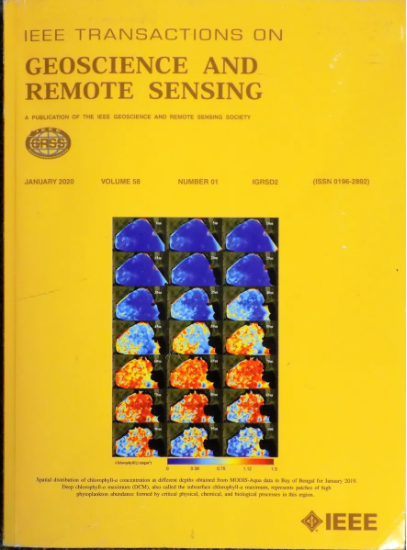基于空间对齐特征金字塔网络和自适应原型对比学习的细粒度船舶识别
IF 8.6
1区 地球科学
Q1 ENGINEERING, ELECTRICAL & ELECTRONIC
IEEE Transactions on Geoscience and Remote Sensing
Pub Date : 2024-12-31
DOI:10.1109/TGRS.2024.3524621
引用次数: 0
摘要
细粒度船舶识别致力于准确定位船舶目标并识别其各自的细粒度类别。目前的船舶识别方法主要依靠特征金字塔网络(FPN)来提取多尺度特征。然而,FPN在融合邻接尺度特征图的特征时存在空间错位问题,导致无法提取细粒度特征。因此,这一限制限制了这些识别方法的细粒度识别能力。此外,船舶目标具有较高的类内多样性和类间相似性,现有识别模型难以提取具有强类别可分性的特征,导致细粒度船舶识别性能下降。为了解决FPN中存在的空间不对准问题,研究了一种空间对准FPN (SAFPN)。SAFPN采用空间感知对准融合模块(SAFM),在邻接尺度特征映射之间有效提取丰富的细粒度特征。此外,针对舰船目标类内多样性和类间相似性导致特征分类可分性较低的问题,进一步提出了自适应原型对比学习(APCL)方法。通过引入原型对比损失,APCL有效增强了舰船特征的类别可分性,从而提高了细粒度舰船识别的性能。在两个细粒度船舶识别数据集FGSD和ShipRSImageNet上进行了大量实验验证。实验结果表明,所提出的SAFPN和APCL有助于模型提取具有强类别可分性的细粒度特征,有效提高了细粒度船舶识别的性能。我们的代码将在https://github.com/liyangfan0/Fine-Grained-Ship-Recognition上公开并可用。本文章由计算机程序翻译,如有差异,请以英文原文为准。
Fine-Grained Ship Recognition With Spatial-Aligned Feature Pyramid Network and Adaptive Prototypical Contrastive Learning
Fine-grained ship recognition endeavors to accurately locate ship targets and recognize their respective fine-grained categories. Current ship recognition methods primarily rely on the feature pyramid network (FPN) for extracting multiscale features. However, FPN exhibits a spatial misalignment issue when fusing features from adjacent-scale feature maps, leading to an inability to extract fine-grained features. Consequently, this limitation constrains the fine-grained recognition capabilities of these recognition methods. Moreover, ship targets possess a high level of intraclass diversity and interclass similarity, yet existing recognition models struggle to extract features with strong category separability, resulting in weakened fine-grained ship recognition performance. In order to solve the spatial misalignment problem that occurs in FPN, a spatial-aligned FPN (SAFPN) is investigated. SAFPN employs a spatial-aware alignment fusion module (SAFM) to effectively extract rich fine-grained features between adjacent-scale feature maps. Moreover, in response to the challenge posed by low category separability in features due to the intraclass diversity and interclass similarity among ship targets, an adaptive prototypical contrastive learning (APCL) method is further proposed. By introducing prototypical contrastive loss, APCL effectively enhances the category separability of ship features, thereby improving the performance of fine-grained ship recognition. Numerous experiments are validated on two fine-grained ship recognition datasets: FGSD and ShipRSImageNet. The experimental results demonstrate that the proposed SAFPN and APCL facilitate the model in extracting fine-grained features with strong category separability, effectively enhancing the performance of fine-grained ship recognition. Our code will be public and available at https://github.com/liyangfan0/Fine-Grained-Ship-Recognition .
求助全文
通过发布文献求助,成功后即可免费获取论文全文。
去求助
来源期刊

IEEE Transactions on Geoscience and Remote Sensing
工程技术-地球化学与地球物理
CiteScore
11.50
自引率
28.00%
发文量
1912
审稿时长
4.0 months
期刊介绍:
IEEE Transactions on Geoscience and Remote Sensing (TGRS) is a monthly publication that focuses on the theory, concepts, and techniques of science and engineering as applied to sensing the land, oceans, atmosphere, and space; and the processing, interpretation, and dissemination of this information.
 求助内容:
求助内容: 应助结果提醒方式:
应助结果提醒方式:


